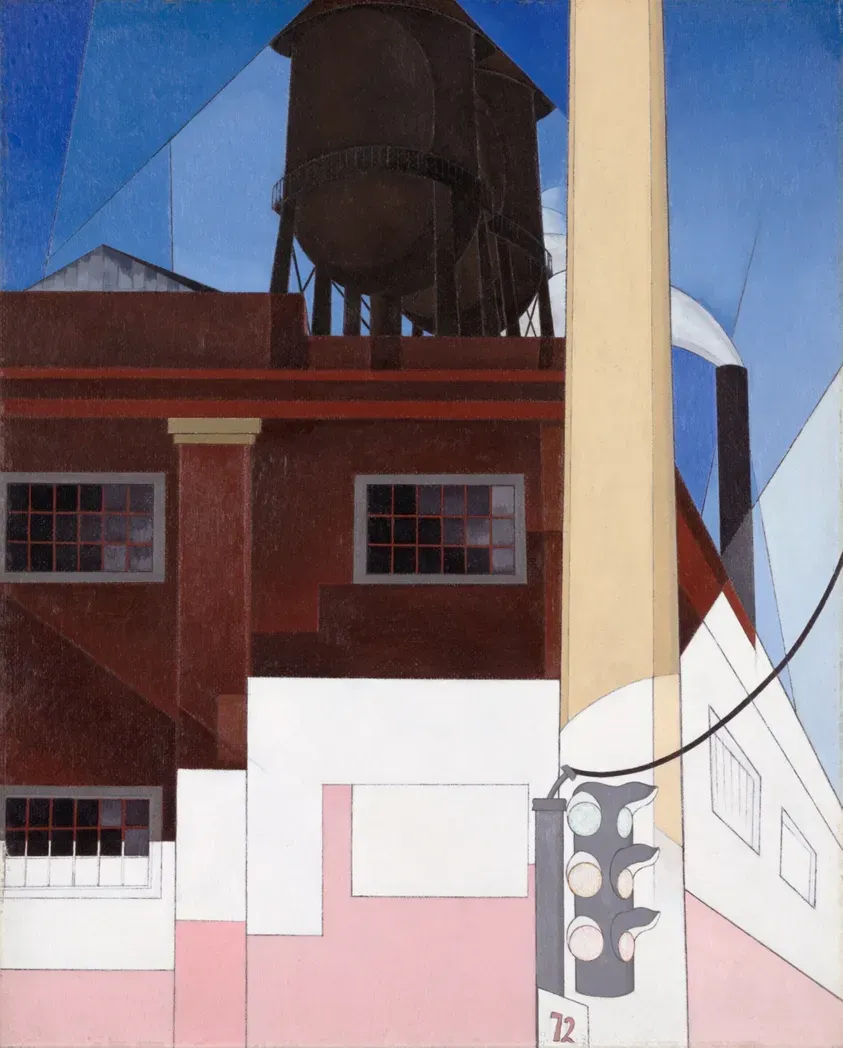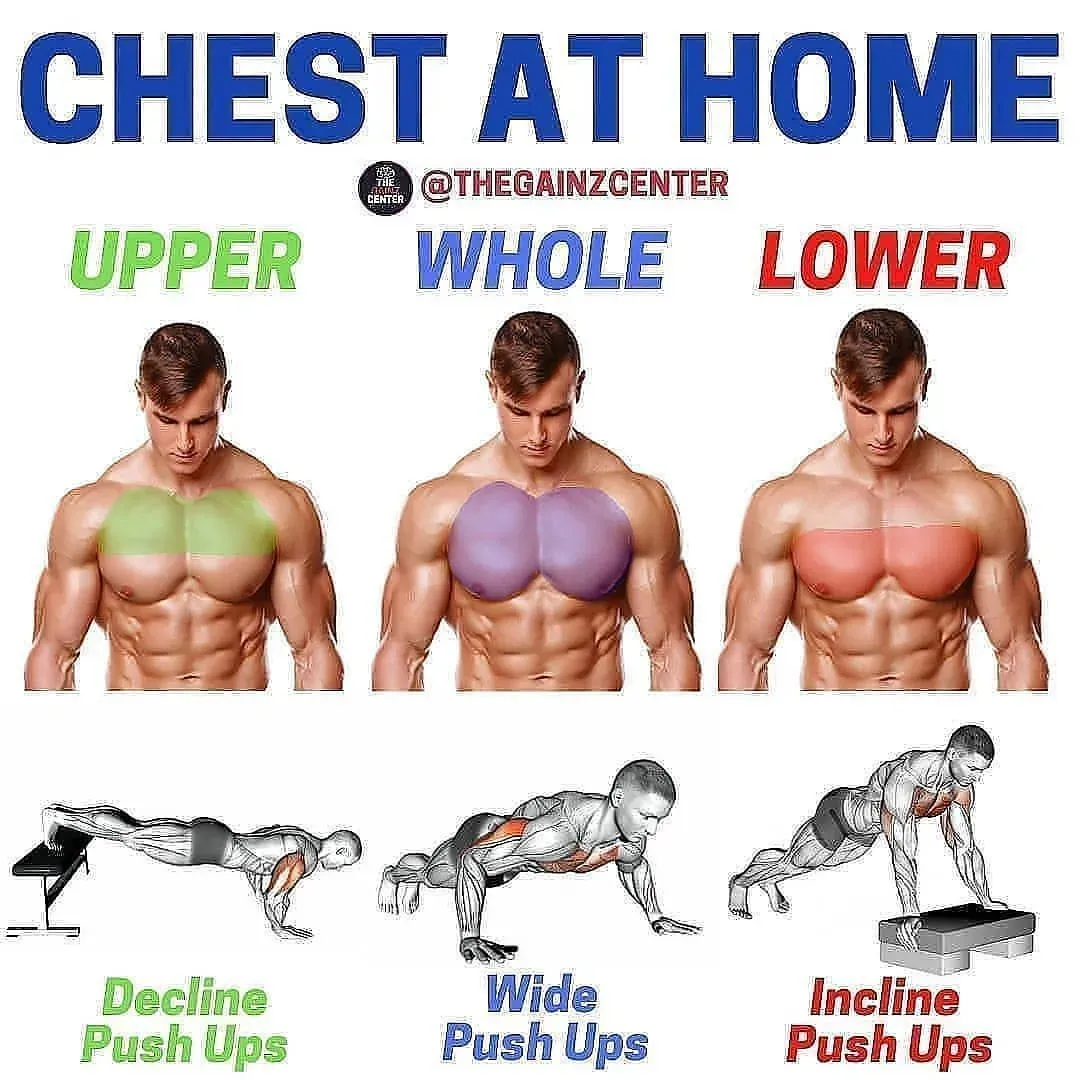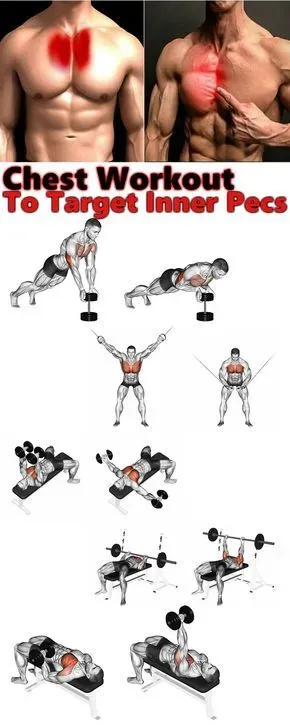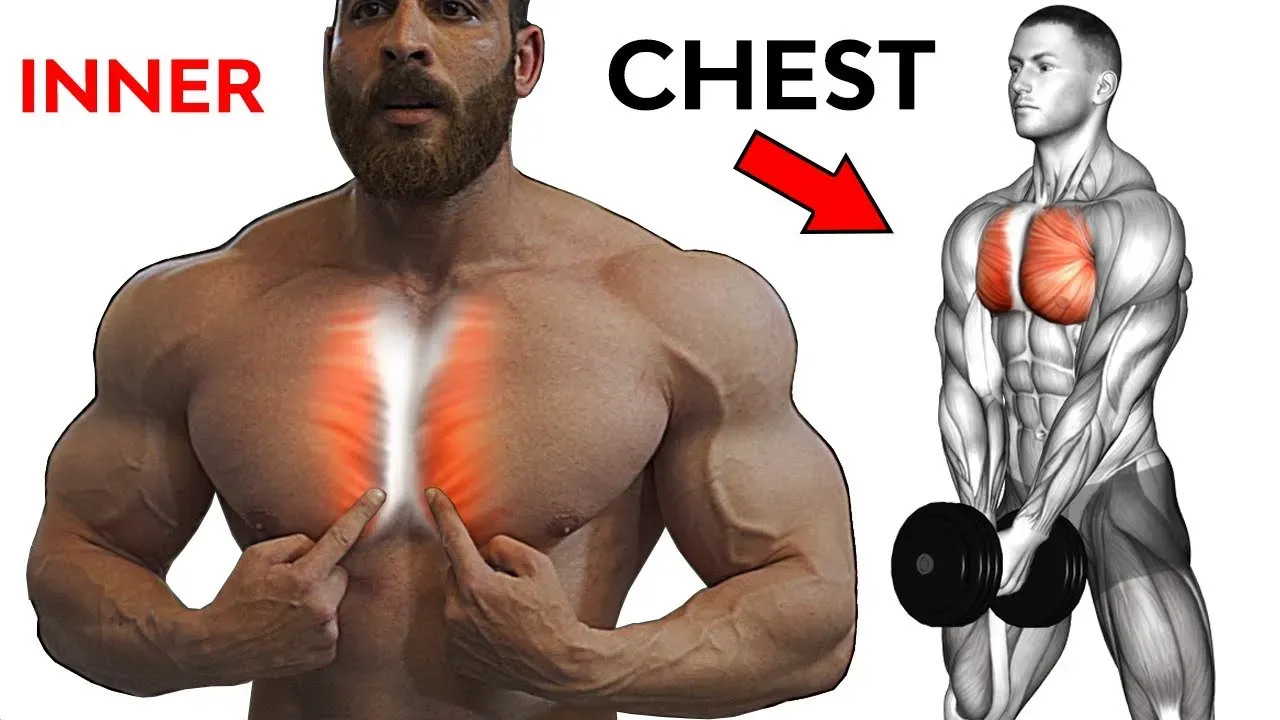Table of Contents
Ever look in the mirror and wish for that sharp, defined line down the center of your chest? You know, the one that makes your pecs pop and gives you that sculpted look. Achieving a prominent "chest line" feels like the mark of serious dedication, a visual payoff for hard work. But maybe hitting the gym isn't your thing right now, or maybe life just keeps you home more often than you'd like. Does that mean you're stuck with less-than-defined pecs? Absolutely not.
Understanding the "Chest Line": What It Is and Why It Matters

Understanding the "Chest Line": What It Is and Why It Matters
Anatomy of the "Chest Line"
Alright, let's talk about this "chest line" thing. It's not some magical muscle you suddenly grow. What people usually mean when they talk about the chest line is the visible division right down the middle of your chest, separating the left and right pectoral muscles. Think of it as the valley between the two peaks of your pecs. This definition comes from the sternal head of the pectoralis major muscle, the largest muscle in your chest. When this part is well-developed and you have a relatively low body fat percentage, that line becomes much more pronounced.
It's less about isolating one tiny fiber and more about building dense muscle mass across the inner part of your pecs and stripping away the fat that covers it. You can't literally isolate *just* the sternal head, but you can definitely emphasize it with specific exercise angles and techniques. It's like trying to tan just your nose – you're still tanning your whole face, but the nose gets more direct sun.
Why People Chase the Chest Line
So, why does everyone seem obsessed with this particular line? Simple: aesthetics. A well-defined chest line creates the illusion of fuller, squarer pectoral muscles. It makes your chest look more sculpted and powerful, even under a shirt. It's a key component of that classic, chiseled physique many people strive for.
Beyond just looking good in a tank top, chasing the chest line often involves exercises that build overall chest strength and size. It's a goal that pushes you to work different angles and contractions, contributing to a more balanced and functional upper body. It's not just vanity; it's a driver for specific, effective training.
- It enhances the visual separation of the pecs.
- It contributes to a sculpted, aesthetic look.
- Targeting it often improves overall chest development.
- It's a tangible sign of progress and dedication.
Can You Build Your Inner Chest at Home? The Science of Targeting

Can You Build Your Inner Chest at Home? The Science of Targeting
Dispelling the "Isolation" Myth (Sort Of)
let's get real for a second. Can you *truly* isolate just the inner chest muscle fibers with bodyweight exercises at home? Technically, no. Muscles don't work in complete isolation. When you do any chest exercise, the entire pectoralis major is involved to some degree. However, you absolutely *can* place a greater emphasis or load on the inner portion, specifically the sternal head we talked about. Think of it like shining a spotlight on one part of the stage – the whole stage is still lit, but one area is much brighter.
Bodyweight exercises, especially push-up variations, are fantastic tools for this. By changing your hand position, the angle of your body, and how you focus your contraction, you can direct more tension towards the center of your chest. It's not rocket science, but it requires paying attention to form and feeling the right muscles work.
Leveraging Angles and Tension for Inner Pecs
So, how do you shine that spotlight on your inner chest when you're just using your own body? It comes down to biomechanics. Exercises where your hands are closer together, or where you're driving your hands *towards* each other as you push, recruit more fibers from the inner pec region. Imagine squeezing a pencil between your pecs at the top of each rep – that's the feeling you want to chase. This focus, combined with the right exercise variations, is the secret sauce for achest line workout at home.
Consistency is king here. You're not moving massive weights, so volume and perfect execution become even more critical. Progressing means doing more reps, slower reps, adding pauses, or using more challenging variations. It's about making bodyweight feel heavy and targeting that specific area with intention.
- Close-hand positions increase inner chest activation.
- Focus on squeezing your pecs together during the contraction.
- Mind-muscle connection is crucial for targeting.
- Progress by increasing reps, time under tension, or exercise difficulty.
- Bodyweight training is effective when done correctly and consistently.
Key Exercises for Your Chest Line Workout at Home

Key Exercises for Your Chest Line Workout at Home
Getting Up Close and Personal: The Power of Close-Grip
Alright, let's get down to the nitty-gritty – the actual moves you need in yourchest line workout at home. The absolute king for hitting that inner chest is any variation where your hands are closer together than shoulder-width. Think about it: when your hands are wide, the tension spreads across the whole pec. Bring them in, and suddenly the muscle fibers closer to your sternum have to work a lot harder to push you up. This isn't just bro-science; it's basic physics and anatomy at play. Close-grip push-ups are your bread and butter here.
Performing them correctly is key. Keep your elbows tucked closer to your body, don't let them flare out like wings. Focus on squeezing your pecs together at the top of the movement, almost like you're trying to crush something between them. Control the descent, don't just drop. Every rep should feel deliberate, targeting that inner sweep of the chest.
Diamond Push-Ups: The Inner Pec Crusher
Taking the close-grip concept to the extreme brings us to the diamond push-up. This is where your index fingers and thumbs touch, forming a diamond shape directly under your chest. This hand position forces your sternal head (the inner part) to bear a significant portion of the load. It's a brutal exercise, no two ways about it, and a cornerstone of any seriouschest line workout at home.
These aren't easy, especially if you're new to them. Don't be discouraged if you can only do a few with good form at first. Quality trumps quantity here. If full diamond push-ups are too tough, start on your knees. The goal is to feel that intense contraction in the very center of your chest. As you get stronger, transition to your toes. You'll feel the difference immediately compared to standard push-ups.
What's the difference between a standard push-up and one targeting the inner chest? Hand position and intention.
Essential Exercises for Inner Chest at Home:
- Close-Grip Push-Ups: Hands inside shoulder-width.
- Diamond Push-Ups: Hands form a diamond shape under the chest.
- Pseudo Planche Push-Ups: Hands turned outwards slightly, shifted lower towards the waist.
- Resistance Band Flies (if you have bands): Mimics dumbbell flies, focusing on squeezing inward.
- Incline Close-Grip Push-Ups: Hands close, feet elevated to target the lower inner chest.
Building Your Complete Chest Line Workout at Home Routine

Building Your Complete Chest Line Workout at Home Routine
Structuring Your Weekly Inner Chest Focus
so you've got the key exercises down – the close grips, the diamonds, maybe even some pseudo planche action if you're feeling spicy. Now, how do you stitch it all together into a routine that actually gets you thatchest line workout at homeprogress? It's not just about doing random push-ups whenever you feel like it. Structure matters. You need to hit these muscles consistently, but also allow for recovery. Aim for two to three chest-focused workouts per week. This gives your muscles enough stimulus to grow but also time to repair before the next session.
Think about organizing your workout into sets and reps, just like you would in a gym. For bodyweight, focusing on quality reps and time under tension is crucial. Instead of just cranking out as many shaky reps as possible, slow it down. Control the negative (lowering) phase, pause briefly at the bottom if you can, and then explode up while really squeezing your inner chest at the top. Three to four sets of 10-20 controlled reps for each exercise is a solid starting point, adjusting based on your current strength level.
Mixing and Matching Exercises for Optimal Gainz
A goodchest line workout at homeisn't just doing diamond push-ups until you drop, three times a week. Variety is the spice of life, and it's also key for hitting your muscles from slightly different angles and preventing plateaus. Don't be afraid to mix and match the exercises we discussed. Maybe one workout focuses more on pure strength with slower, heavier close-grip push-ups, and the next incorporates more volume with diamond push-ups and incline variations.
Consider adding other movements that complement chest training. Triceps are heavily involved in pushing exercises, so giving them some love helps your overall pressing strength. Shoulder health is also paramount. A balanced routine prevents imbalances and keeps you injury-free so you can keep building that chest line. Think of your workout week as a puzzle where all the pieces fit together for overall upper body development, with a specific focus on the inner chest on your dedicated chest days.
Ever feel like you're doing push-ups but not really feeling it in your chest? You're probably not focusing on the mind-muscle connection. Slow down and feel the squeeze!
Maximizing Your Results from Your Chest Line Workout at Home

Maximizing Your Results from Your Chest Line Workout at Home
Consistency is Non-Negotiable (Sorry, No Magic Pills)
Look, building that defined chest line with just your bodyweight isn't a sprint; it's definitely a marathon, and sometimes it feels like you're crawling uphill. You won't see dramatic changes overnight, no matter how many diamond push-ups you cram in today. The single most important factor in seeing results from yourchest line workout at homeis showing up consistently. That means sticking to your workout schedule, even on days you'd rather binge-watch questionable reality TV. Skipping sessions means skipping progress. Your muscles grow when they're challenged repeatedly over time, not just when they're shocked occasionally.
How consistent? Aim for those 2-3 chest-focused sessions per week, hitting the exercises we discussed. Don't just go through the motions; push yourself. Track your reps. When 15 reps of close-grip push-ups feel easy, aim for 18. When 10 diamond push-ups on your toes become manageable, try slowing down the negative or adding a pause at the bottom. Continuous, deliberate progression is the engine that drives muscle growth and carves out that definition.
Fueling the Machine: Nutrition and Recovery
You can do the most perfectchest line workout at homeroutine ever designed, but if you're not fueling your body right and giving it time to recover, you're essentially spinning your wheels. Muscle isn't built during the workout itself; it's built *after* the workout, when you're resting and providing the necessary raw materials. Think of it like trying to build a house without lumber or bricks – it's just not going to happen.
Protein is the building block of muscle. Make sure you're getting enough throughout the day, especially after your workouts. Lean meats, fish, eggs, dairy, legumes – figure out what works for you and eat consistently. Don't neglect carbs and healthy fats either; they provide the energy you need to perform and the hormonal balance required for recovery. Sleep is equally critical. Your body does a ton of repair and growth while you're catching Z's. Aim for 7-9 hours a night. Skimping on sleep is a surefire way to stall your progress and feel perpetually run down.
What should you eat after a workout?
- Lean protein source (chicken breast, fish, Greek yogurt, tofu)
- Complex carbohydrates (sweet potato, brown rice, quinoa)
- Maybe a piece of fruit for quick energy
- Plenty of water!
Form, Focus, and Feeling the Squeeze
This might sound basic, but it's where many people drop the ball with bodyweight training. Proper form isn't just about preventing injury (though that's a huge plus); it's about making sure the target muscles are actually doing the work. A sloppy diamond push-up where your back is sagging and your elbows are flaring wide hits your joints and ego more than your inner chest. Watch videos, film yourself, and be brutally honest about your technique. Quality over quantity, always.
Combine good form with the mind-muscle connection. This means actively thinking about squeezing your inner chest throughout the entire movement. As you push up in a close-grip push-up, *feel* those inner fibers contracting. At the top, consciously squeeze them together. This focus helps recruit more of the target muscle fibers. Finally, listen to your body. Pushing through slight discomfort is one thing; pushing through sharp pain is just dumb. Rest when you need to, adjust exercises if something feels wrong, and remember that consistency with smart training beats occasional bursts of reckless effort every single time.
Carving Your Chest Line, No Gym Required
So, there you have it. The idea that you absolutely *need* a gym packed with machines to build a noticeable chest line? It's largely bunk. While genetics play a role in muscle shape, smart exercise selection and consistent effort at home can make a real difference in defining that inner chest area. We've covered the muscles involved, busted the myth of total isolation while acknowledging effective targeting, and laid out the specific moves – those diamond push-ups and variations – that get the job done. Remember, it's not just about grinding through reps; it's about focused contractions, proper form, and pushing yourself safely. Building that definition takes time, like chipping away at stone. Don't expect overnight miracles, but stick with a structuredchest line workout at home, pay attention to how your muscles feel, and you'll see progress. Your living room is now your forge. Get to work.
